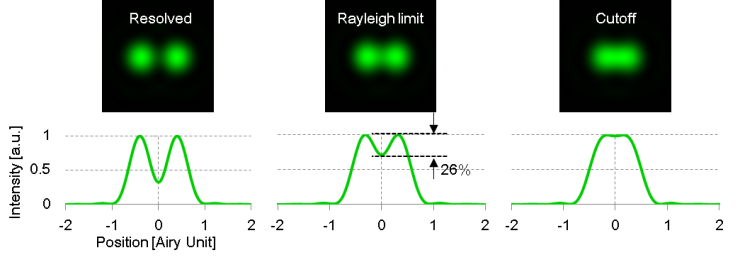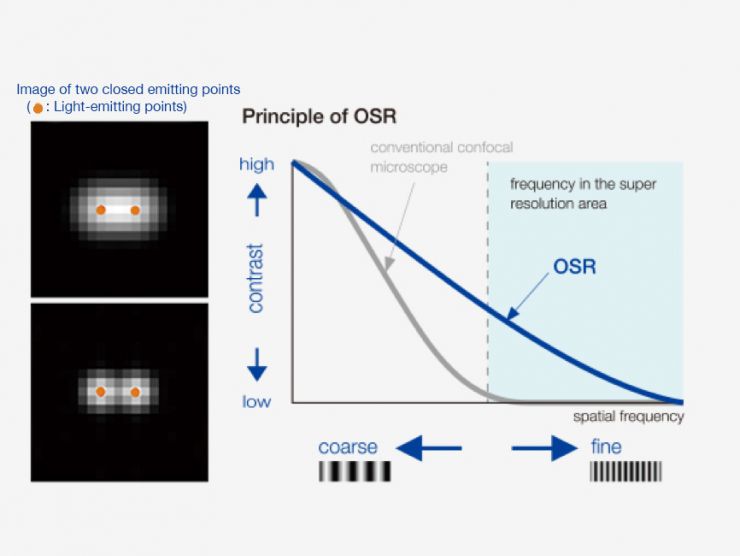In 2014, the Nobel Prize in Chemistry was awarded to three scientists “for the development of super-resolved fluorescence microscopy.” As a result, the microscope industry has seen a dramatic surge of interest in super-resolution microscopy techniques over the last five years.
For those who are unfamiliar with the term, super-resolution microscopy refers to any optical technique used to view samples at a higher resolution than the diffraction limit of conventional light microscopes.
Today’s blog post will discuss super-resolution microscopy in depth. Learn about the limitations of super-resolution microscopes and discover ways to enable super resolution on your existing microscope system.
The limitations of super-resolution microscopes
Today, nearly every commercial microscope manufacturer offers super-resolution microscopes. These microscopes are almost as easy to use as a regular confocal microscope, but this has not always been the case. It has taken years to create user-friendly super resolution microscopes that do not require experts to run and align them.
Initially, a wave of interest in super resolution swept through the research community. But interest waned as researchers learned how much effort was required to perform these experiments. The returns were not worth the efforts to modify sample preparation, alter imaging mediums, or perform tedious tasks like refractive index matching.
Can confocal microscopes perform super-resolution imaging?
It has been well established that reducing the pinhole size below 1 AU in confocal microscopes enables increased resolution.
Theoretically, doing so could achieve the 2x increase in resolution that commonly defines super resolution. But in practice, it was found that resolution can only be improved by approximately 1.4x because high-frequency signals are weak when compared to plentiful low-frequency signals.
As a result, efforts focused on how existing technologies, like the confocal microscope, could be improved to use existing high-frequency spatial information already present in these images. Naturally, deconvolution came to mind.
How does deconvolution work?
Deconvolution algorithms work by reassigning out of focus photons back to their original positions, based on a theoretical or acquired point spread function (PSF), to increase the sharpness and clarity of acquired images.
In fact, deconvolution algorithms alone can reduce the size of a sub-resolution fluorescent bead full width at half maximum (FWHM) to achieve a measured 2x increase in resolution over widefield.
Let’s take a step back for a moment and define resolution in the context of microscopy. Traditionally, this is defined using the Rayleigh Criterion, which specifies that there must be at least a 26% decrease in intensity between two objects to properly define them as two separate objects.

More commonly, this is referred to as two-point resolution. Slimming down the FWHM of a sub-resolution object through deconvolution provides sharper images, but this may not be enough to achieve super resolution.
This begs the question: is deconvolution enough to provide true super resolution data in actual samples?
The answer is no.
One of the famous linear deconvolution methods is the Wiener filter. The Wiener filter handles all high-frequency data in the same way, which leads to the formation of ringing artifacts, as displayed in the figure below:

Some may argue that these artifacts are minimized by modifying the strength of the filter or locking researchers out of them completely. But the reality is, large artifacts are not acceptable when observing structures below the resolution limit.
With that in mind, we developed Olympus Super Resolution.
Acquire (Super) Clear Images with Olympus Super Resolution
What exactly is Olympus Super Resolution? OSR is a filtering process that amplifies or attenuates specific high-frequency spatial information to provide a more reliable result.

This process can be coupled with deconvolution algorithms to make super resolution images sharper and clearer.
To learn how Olympus Super Resolution can help you acquire clear images on your microscope, reach out to us today.

